“What are we going to do with all these bones?” Seventeenth century Franciscan friars must have asked themselves this challenging question once the bones were dug up from cemeteries and local churchyards throughout Évora, Portugal. The bones and skulls of thousands of dearly departed must have created quite a huge pile. How did this situation come to be? And why here? A look at Évora’s history reveals the answers.
Évora’s proximity to Lisbon and its well-preserved Old Town make it a popular tourist destination these days. Medieval walls surround most of this part of the city, and it’s filled with beautiful civic buildings, churches, residences, and historic sites laid out on a street grid from the Middle Ages and Renaissance periods. They reflect the cultural riches that history bestowed upon Évora.
A Mountain of Bones
Évora reflects several historical eras over two millennia that impacted the city’s growth and importance. Starting with the Romans who left behind the impressive Templo de Diana, the North African Moors introduced the next wave of growth in the early eighth century. They created a prosperous agricultural center and introduced a refined culture to a growing city.
An up-and-coming Portuguese king kicked the Moors out 400 years later. Under his successors’ hegemony, the city experienced its Golden Age well into the eighteenth century. Évora flourished, as royal courts took up residences here, building palaces, churches, and monuments. The city became a major center for the humanities and the arts, famous for its painters, composers, sculptors, and playwrights.
Évora grew rapidly. And that’s why our Franciscans came to be faced with a mountain of bones.
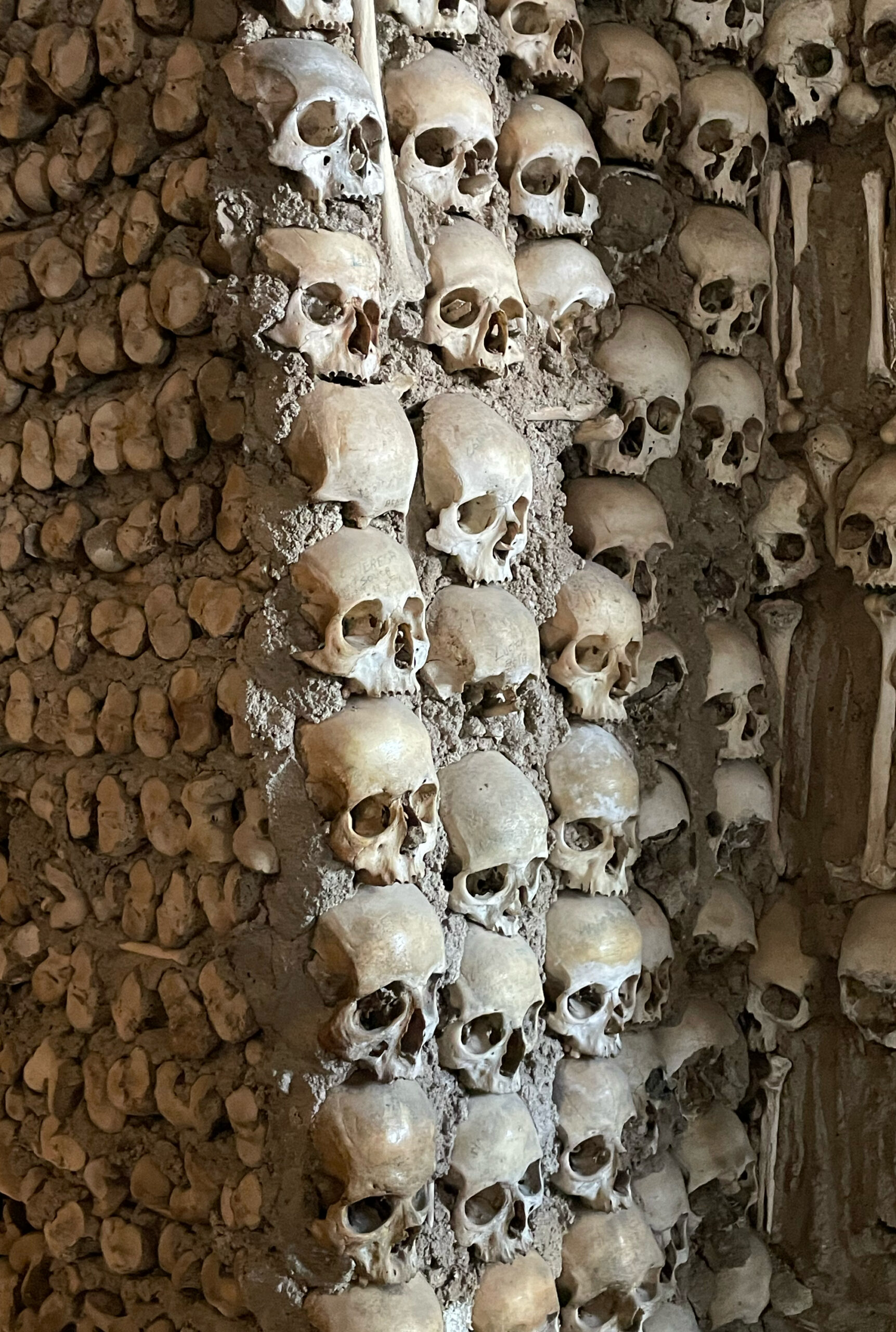
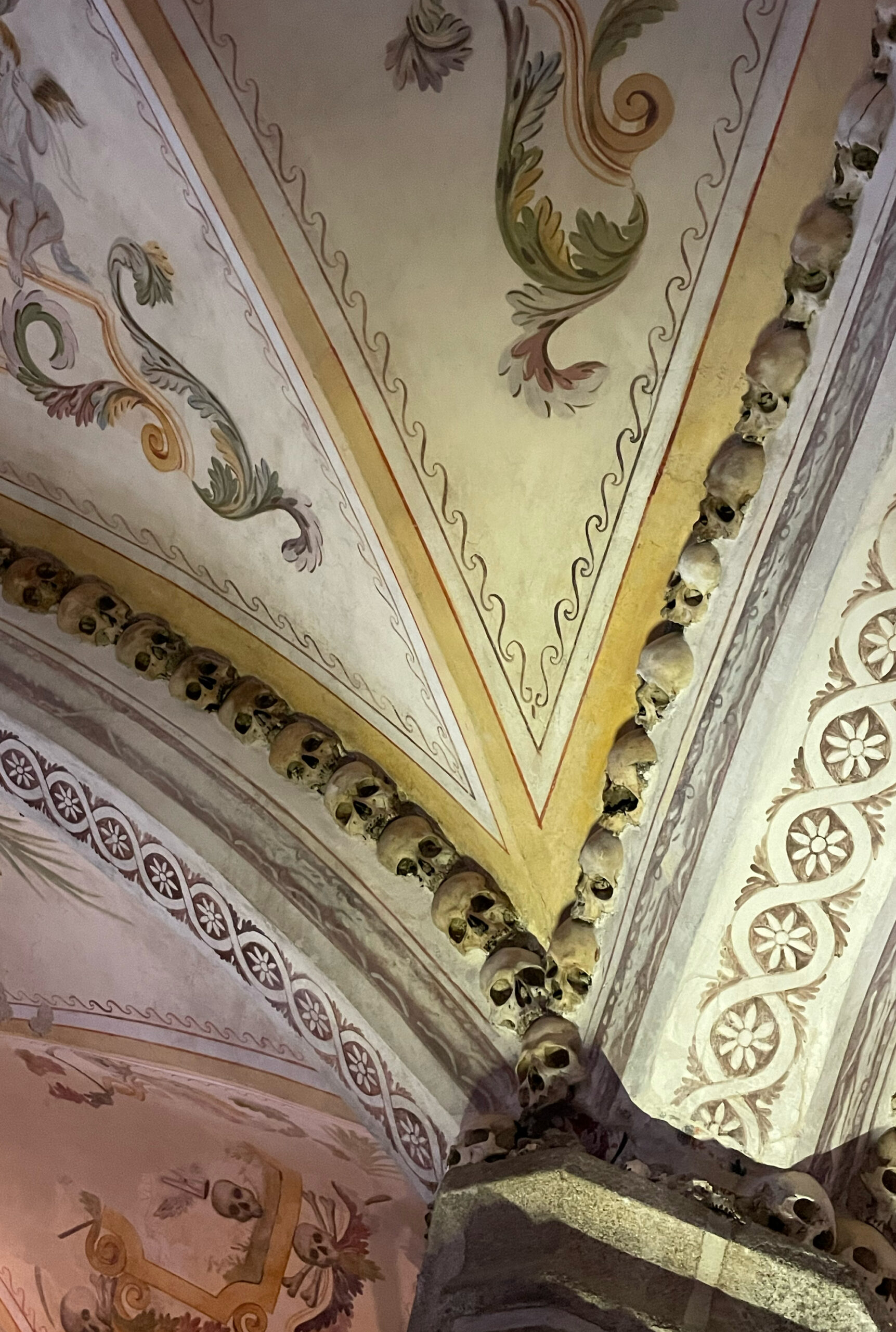
The seventeenth century’s rapid expansion put pressure on available land. The city eyed cemeteries for their valuable real estate, and legions of corpses were disinterred to make way for new structures. Church graveyards experienced a different problem. People continued to die, so officials dug up the long-dead and replaced them with the remains of newly deceased residents.
In all, our friars faced the bones and skulls of 5000 souls. Whatever the solution, the dead had to be honored, so a careless disposal of the remains was not an option.
“I have an idea! Let’s build a chapel and cover the walls and columns with bones so everyone can see and appreciate those who went before us.” And that’s how A Capela dos Ossos (Chapel of Bones) became a reality, creating a sanctuary as part of the city’s Royal Church of St. Francis. Today’s sensibilities would certainly find this action bizarre and grotesque; it certainly wouldn’t conform to most building codes in the U.S. For the clergy of those times, creating an ossuary (bone house) paid the ultimate respect to the dead.
In fact, over several hundred years beginning in the Middle Ages, both Catholic and Orthodox churches built 40 significant ossuaries throughout Europe––in Italy’s Milan and Rome; Paris; Germany’s Cologne; and Czermna, Poland. Considered the most unique, the Sedlec Ossuary in Kutna Hora, Czech Republic has a large chandelier at the church’s center and a coat of arms of a local family entirely made from human bones. While some ossuaries served as churches, others are storage facilities, where bones are often artfully arranged in displays.
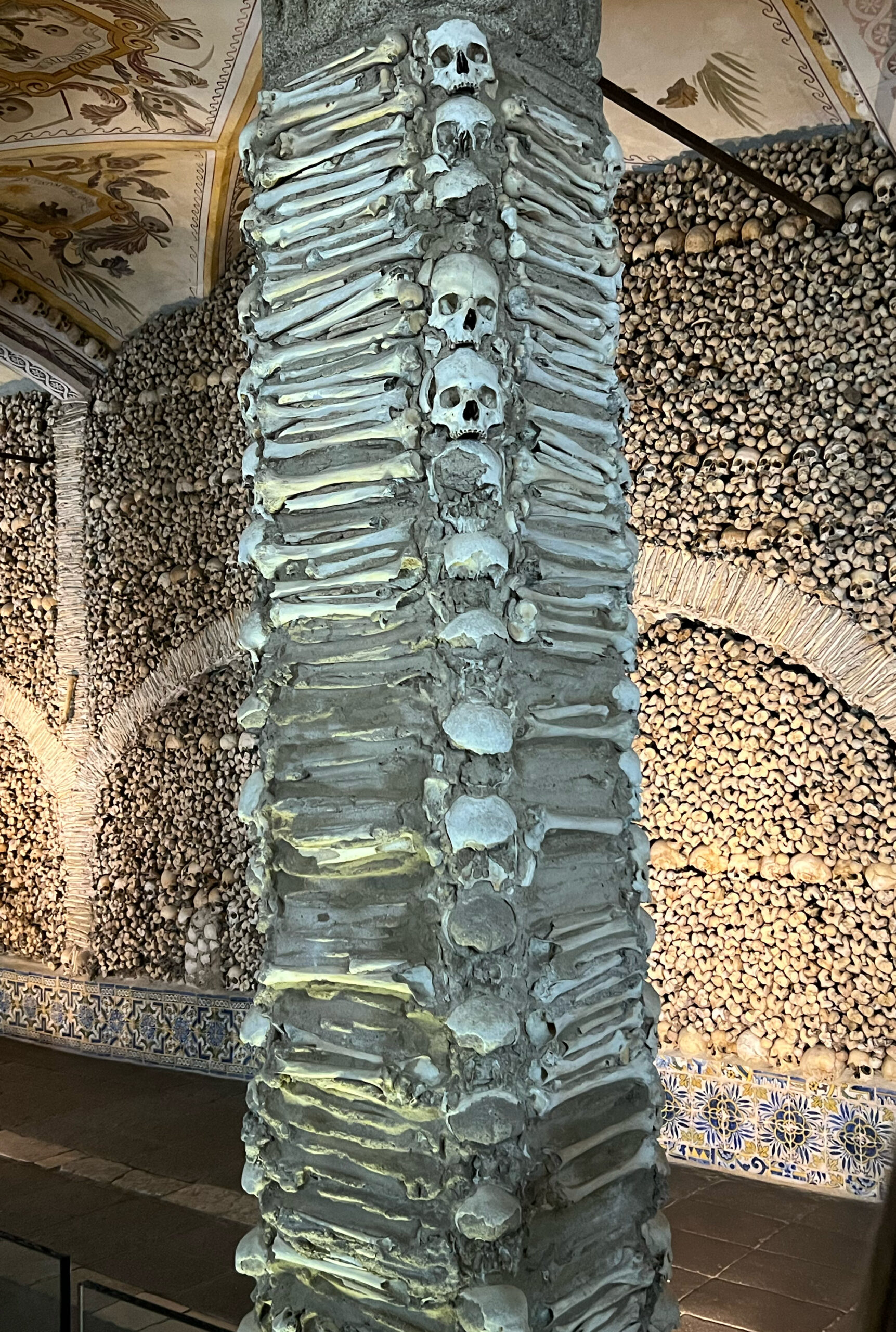
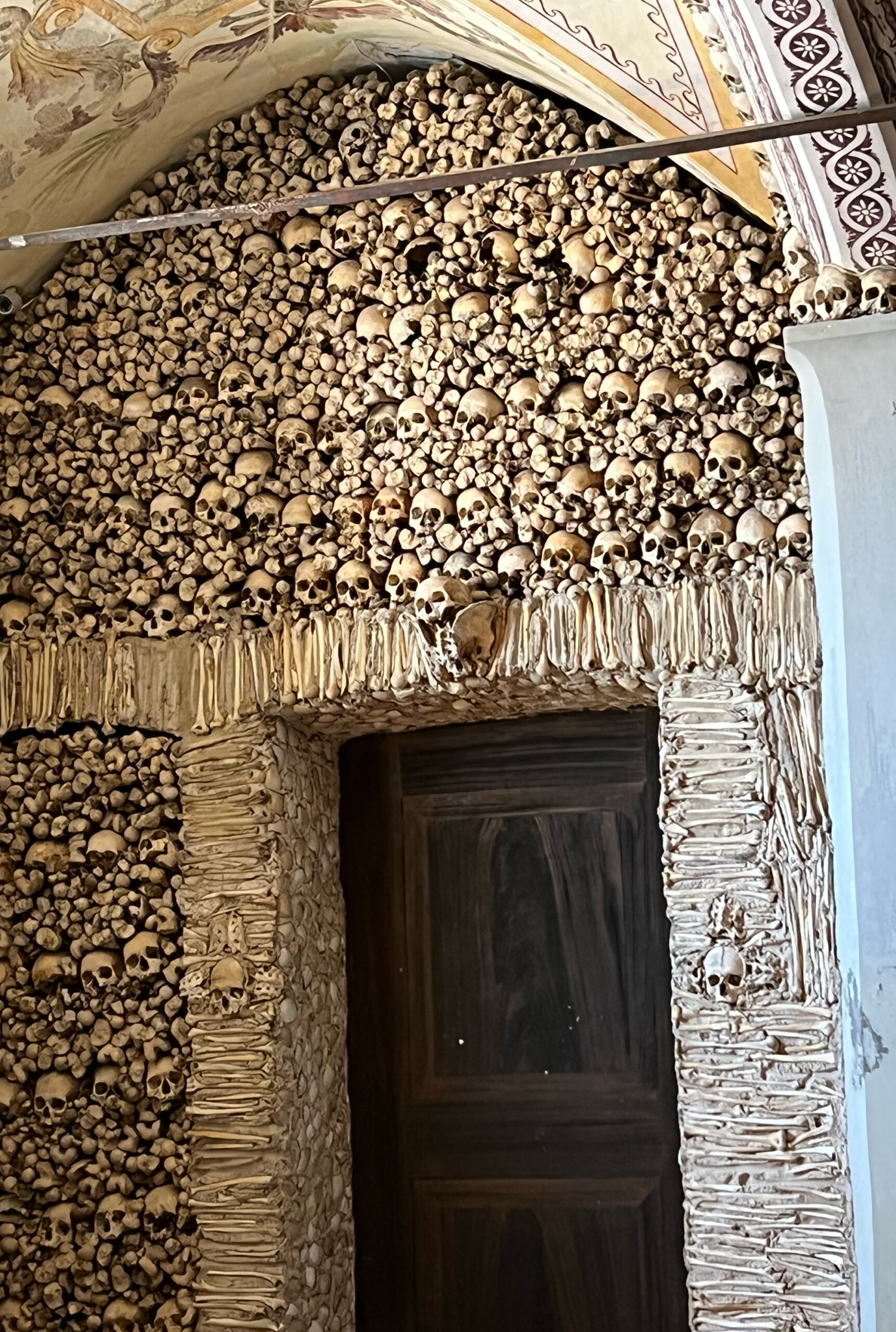
Photos: Rick Spitzborg
Évora's Chapel of Bones Is a Place to Contemplate the Inevitable
As I enter the chapel, an inscription over the threshold reads, “We bones that are here, await yours,” a solemn reminder of the fate that awaits us all. Three small windows placed high on the left wall provide the chamber’s only natural light. Stacked bones cover walls; skulls line arches and eight columns in this intimate space. White painted bricks with death motifs form the ceiling. Two mummies––a middle aged woman and a young girl––are encased near the altar.
Priests used their creative instincts to make a strangely attractive space; their intention––a meditative place for visitors to contemplate the inevitable. I expect a morbid, depressing atmosphere. Instead, the interior fascinates me, a sober, not somber, experience.
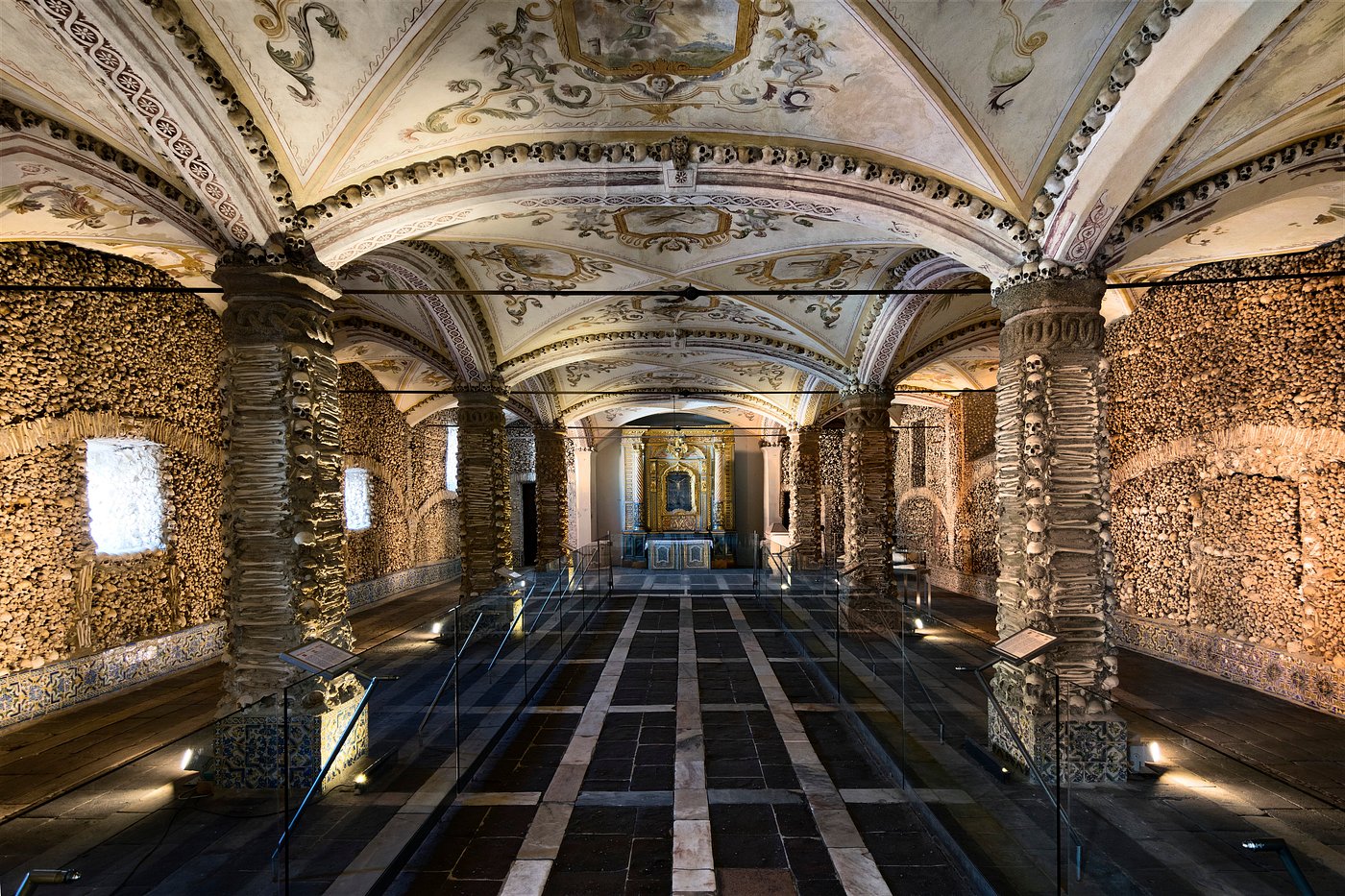
Put Évora on your “must-see” list of Portuguese cities to visit. Besides stepping inside the Chapel of Bones, you’ll also enjoy this fascinating city layered with history and culture as you wander the many streets and lanes leading away from its impressive Praca do Giraldo (Giraldo Square). If you spend overnight or a few days there, make sure you stay inside the old town’s walls. You’ll forget in what century you’re living.
If you want to find out more about Évora and Portugal’s other medieval towns I visited, see my story Traveling to Portugal: Medieval Towns and Monasteries.
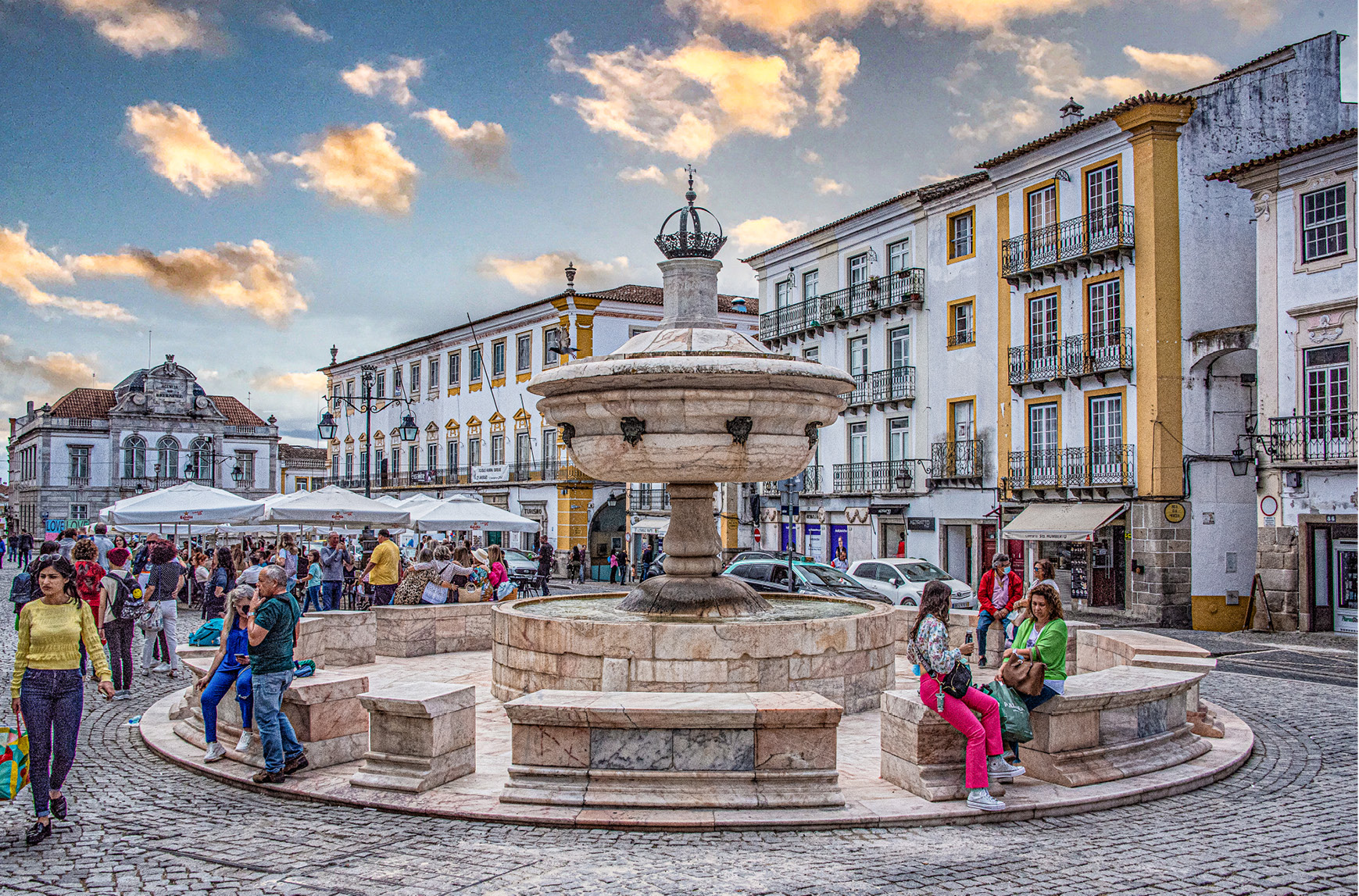
If You Go
Getting There
Daily Non-Stop Flights to Lisbon from the U.S.:
From Boston, New York JFK, Newark, Philadelphia, New York La Guardia, Chicago O’Hare, Miami, San Francisco, and Washington D.C.From Lisbon to Évora:
By car –– 82 miles (133 km.) for an easy 90 min. drive. (Very good road system in Portugal)
By Train –– Departs from Oriente Station for 81 min. trip. $9-$14.
By Bus –– From Sete Rios Station for 2 hr. 5 min. trip. $11-$17
Accomodations
- Albergaria do Calvário, 4-star hotel inside the Old Town walls
